 |
 |
 |
| |
Database Links Bictegravir and Dolutegravir to Metabolic Problems
|
| |
| |
IDWeek 2020, October 22-25, 2020
Mark Mascolini
Analysis of the FDA Adverse Event Reporting System (FAERS) linked the integrase inhibitors bictegravir and dolutegravir to metabolic adverse events indicated by hyperglycemia or new-onset diabetes [1]. This study at Midwestern University-Chicago College of Pharmacy found links between all four integrase inhibitors and weight gain.
Accumulating evidence ties use of HIV integrase inhibitors to metabolic problems such as weight gain [2,3], hyperglycemia, and diabetes. Weight gain is a particular concern for the large fraction of already-overweight or obese people with HIV infection.
To get a better understanding of whether the integrase class or individual integrase inhibitors boost odds of weight gain or metabolic problems, two Midwestern University researchers turned to the FAERS database, a publicly available stockpile of spontaneously reported medication adverse events. They characterized FAERS findings as "real-world post-marketing pharmacovigiliance data," arguing that clinicians need real-world data about these side effects to make informed decisions about treatment.
The researchers analyzed FAERS data on adults from the fourth quarter of 2007 through the fourth quarter of 2019, using the Standardized MedDRA Query (SMQ) for hyperglycemia or new-onset diabetes mellitus (H/DM). They defined weight gain as increased weight or body mass index analyzed as a separate event.
To explore associations between medications and these two groups of adverse events, the investigators calculated reporting odds ratios (ROR) and 95% confidence intervals (CI) for the entire integrase inhibitor class and for individual integrase inhibitors. The researchers adjusted the analysis for gender, age, type of reporter (for example, patient or provider), specific integrase inhibitor, and SMQ terminology for the adverse event of interest.
Sorting through more than 10.1 million FAERS reports disclosed 732,591 cases of H/DM (7.2%) and 109,556 reports of weight gain (1.1%). Nearly half of these reports (49%) came from consumers, while physicians provided one quarter (23%). Patient age averaged 57 years (standard deviation 17), and 63% were women. Countries with the most reports were the United States, the United Kingdom, and Japan.
The researchers counted 7840 reports for dolutegravir, 5551 for raltegravir, 4034 for elvitegravir, 1414 for bictegravir, and 18,400 for any integrase inhibitor. Statistical analysis independently linked each of these integrase inhibitors, and the entire class, to greater odds of weight gain:
Greater odds of weight gain:
-- Any integrase inhibitor: ROR 2.16, 95% CI 1.96 to 2.38
-- Bictegravir: ROR 6.82, 95% CI 5.50 to 8.41
-- Raltegravir: ROR 3.29, 95% CI 2.77 to 3.91
-- Dolutegravir: ROR 1.86, 95% CI 1.58 to 2.18
-- Elvitegravir: ROR 1.63, 95% CI 1.37 to 1.92
Integrase inhibitors as a class, bictegravir, and dolutegravir independently upped odds of metabolic events recorded as H/DM:
Greater odds of metabolic adverse events:
-- Any integrase inhibitor: ROR 1.20, 95% CI 1.15 to 1.27
-- Bictegravir: ROR 1.23, 95% CI 1.10 to 1.37
-- Dolutegravir: ROR 1.28, 95% CI 1.19 to 1.39
The Midwestern University team noted that their analysis is limited by the accuracy of data reported to FAERS and by possible reporting biases by age, countries, and gender. With these limitations in mind, they concluded that all integrase inhibitors-as a group and individually-are associated with weight gain, while bictegravir and dolutegravir are associated with metabolic abnormalities indicated by hyperglycemia or new-onset diabetes. They urged clinicians to keep the possibility of these adverse events in mind when prescribing HIV integrase inhibitors.
Recent analysis of 19,462 HIV-positive people in France starting first-line therapy with an integrase inhibitor, a protease inhibitor, or a nonnucleoside found no associations between integrase drugs and new-onset diabetes [4]. But the study did link body mass index above 30 kg/m2 (obesity) to new-onset diabetes.
References
1. Murray MM, Harpe SE, META-INSTI: metabolic adverse events following integrase strand transfer inhibitor administration in spontaneous adverse event reports. IDWeek 2020, October 22-25, 2020. Abstract 106.
2. Chen YW, Hardy H, Pericone CD, Chow W. Real-world assessment of weight change in people with hiv-1 after initiating integrase strand transfer inhibitors or protease inhibitors. J Health Econ Outcomes Res. 2020;7:102-110. doi: 10.36469/jheor.2020.13457.
3. Lake JE, Wu K, Bares SH, et al; ACTG A5322 Study Team. Risk factors for weight gain following switch to integrase inhibitor-based antiretroviral therapy. Clin Infect Dis. 2020 Feb 26:ciaa177. doi: 10.1093/cid/ciaa177.
4. Ursenbach A, Max V, Maurel M, et al; Dat'AIDS Study Group. Incidence of diabetes in HIV-infected patients treated with first-line integrase strand transfer inhibitors: a French multicentre retrospective study. J Antimicrob Chemother. 2020 Aug 13:dkaa330. doi: 10.1093/jac/dkaa330.
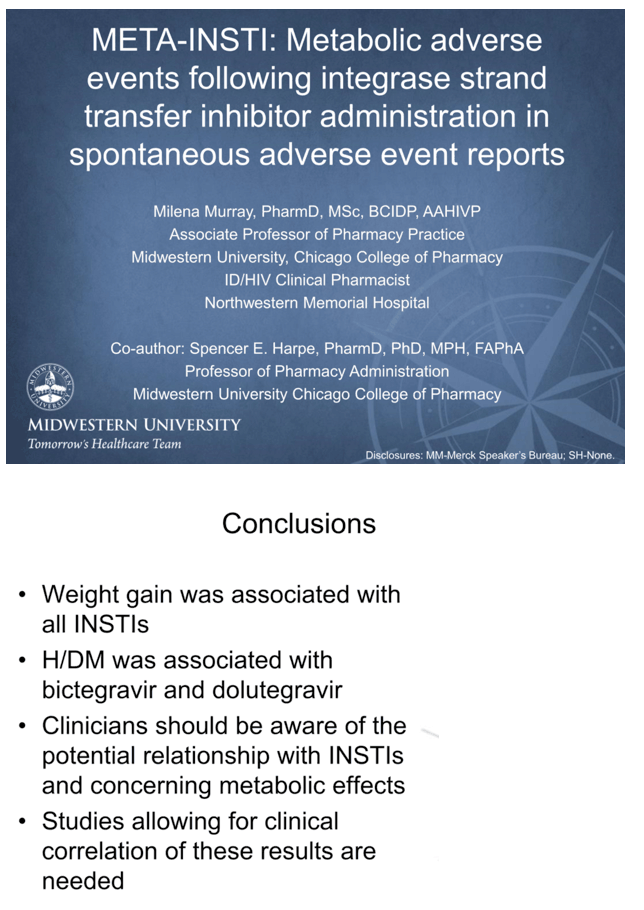
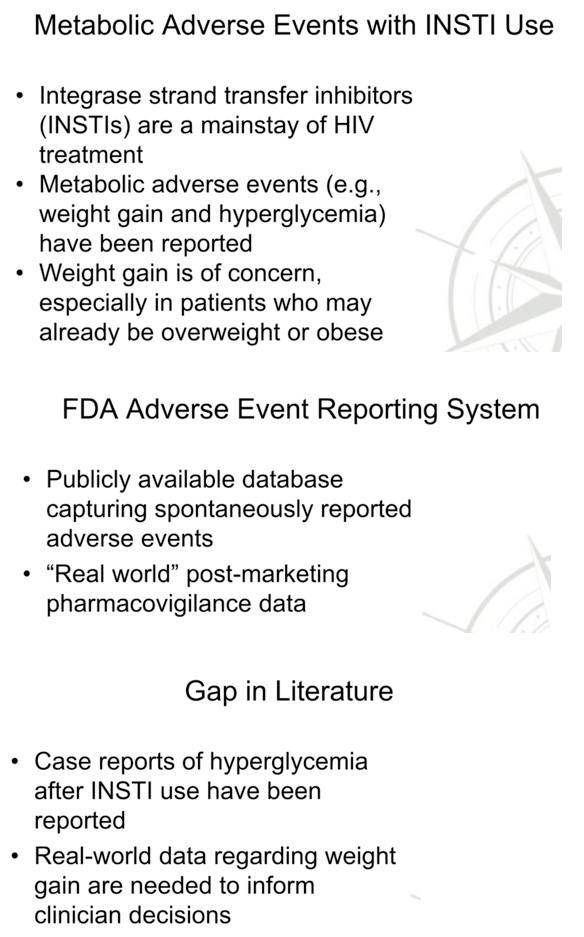
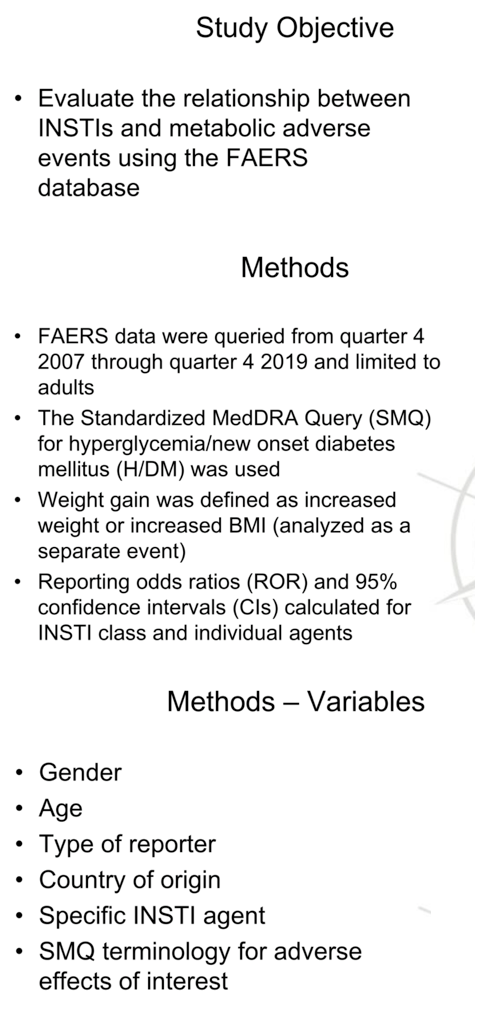

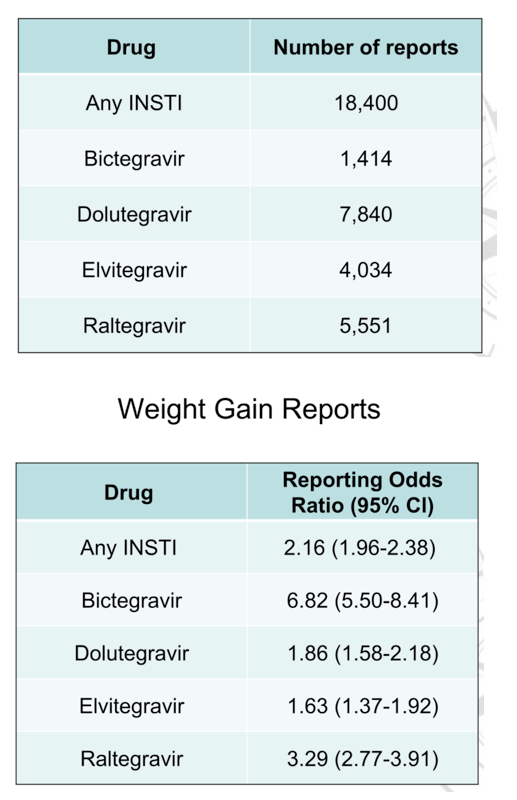
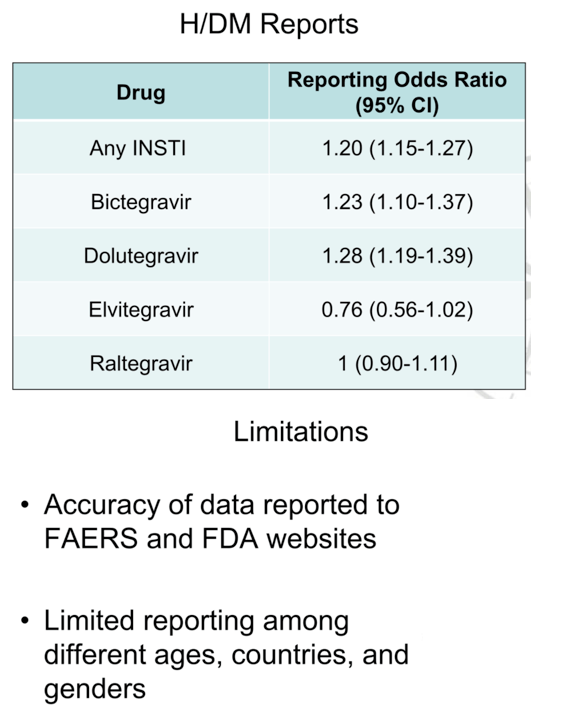
|
| |
|
 |
 |
|
|